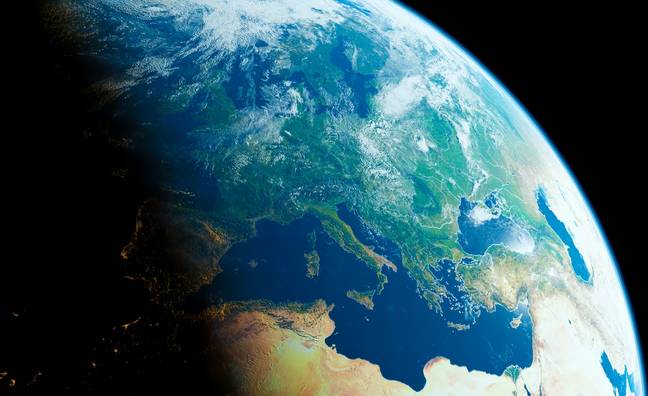While learning science at school wasn’t everyone’s strong point, surely you’ve learnt everything you need about the planet we call home?
I think a lot of us are guilty of assuming Earth is a solid round ball, right?
However, you’d be wrong if you assumed that as last July, scientists discovered that a solid metal ball is smack bang in the middle of the Earth’s core.
For years, there have been tons of debates within the scientific community about what could possibly lie inside the inner core of the Earth.
However, all the speculation has been put to bed thanks to seismologists at the Australian National University, who believe that this new core happened after a ‘significant global event from the past’.
Through their studies of specific earthquakes and monitoring’ seismic waves reverberating through the entire planet’, Thanh-Son Phạm and Hrvoje Tkalčić found a solid metal core, which led to them spotting new details about the core that hadn’t been noticed before.
This is because they were able to study the core in a new way than previously done.
So not only were they able confirm the existence of a solid metal core, also known as an ‘innermost inner core’ or IMIC, but they were also able to make another discovery by chance.
The pair are now estimating that the inner metal core is approximately 800 miles in diameter, which makes up nearly one percent of the Earth’s volume.
This is far bigger than other scientists had previously predicted in other studies conducted on the Earth’s core.

Thanh-Son Phạm, told The Washington Post: “Clearly, the innermost inner core has something different from the outer layer,” after publishing their findings in Nature.
But despite the core being made of the same materials as the molten core, this solid metal inner core may also have different properties, the scientist explained.
He said: “We think that the way the atoms are [packed] in these two regions are slightly different.”
He went on to add that this means seismic waves travel through it at a different rate.
But that’s not all – as researchers also believe that this solid metal core could be a key component to understanding how life evolved on planet earth and the theory of evolution.
Due to their study, they believe that the metal inner core could be a ‘fossilised record’ of a significant tectonic event, with the core solidifying shortly afterwards.
The researchers wrote in The Conversation: “Studying Earth’s center is not just a topic of academic curiosity, but something that sheds light on the very evolution of life on our planet’s surface.”

Dr. Thomas Hughes is a UK-based scientist and science communicator who makes complex topics accessible to readers. His articles explore breakthroughs in various scientific disciplines, from space exploration to cutting-edge research.

.webp)






